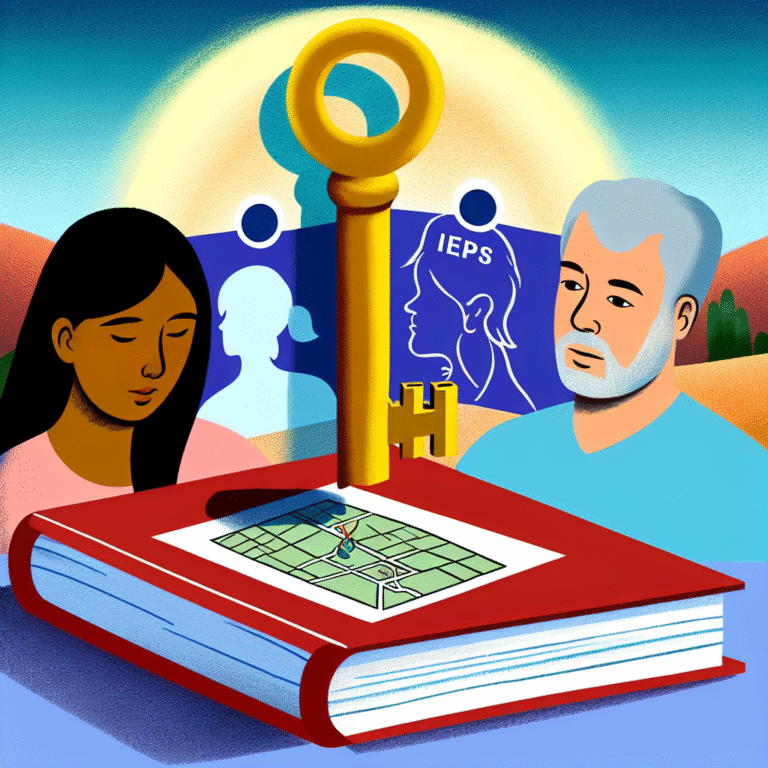Breaking the Silence: How Learning Disabilities Fuel Bullying in Schools – The Ultimate Guide to Understanding and Combatting Bullying
Introduction
Imagine walking into a classroom, filled with the chatter of students eagerly discussing their favorite subjects and weekend plans. Now, imagine being the one student who sits in silent despair, struggling not only to keep up with the lessons but also fearing the whispers and sidelong glances directed your way. This is the reality for many children with learning disabilities, who often find themselves as the targets of bullying. Breaking the Silence: How Learning Disabilities Fuel Bullying in Schools is not just a call to awareness; it’s a rallying cry for change. As educators, parents, and peers, we have the power to foster an environment of inclusivity and understanding that can turn the tide against bullying.
In this article, we will delve deep into the intricate relationship between learning disabilities and bullying, illustrating the urgent need for awareness and action. We will explore impactful case studies, provide statistical evidence, and offer actionable insights that can help combat the issue. Together, let’s break the silence.
Understanding Learning Disabilities
What Are Learning Disabilities?
Learning disabilities (LD) encompass a range of neurological disorders that affect the brain’s ability to receive, process, and communicate information. Common types include dyslexia (reading difficulties), dyscalculia (mathematical challenges), and dysgraphia (writing difficulties). It’s essential to understand that these disabilities sit on a spectrum; some children may experience mild challenges, while others face more significant hurdles.
Prevalence in Schools
According to the National Center for Learning Disabilities (NCLD), approximately 1 in 5 students has a learning disability. This staggering statistic highlights the importance of addressing the unique needs of these children within the educational system.
| Type of Learning Disability | Percentage of Students Affected |
|---|---|
| Dyslexia | 80% – 90% of all diagnosed |
| Dyscalculia | 5% – 7% |
| Dysgraphia | 5% – 20% |
| Other Learning Disabilities | 5% – 15% |
The Mental Toll of Learning Disabilities
Children with learning disabilities often grapple with low self-esteem, anxiety, and frustration as they navigate their academic challenges. This emotional and psychological toll not only affects their school performance but also makes them more vulnerable to bullying.
The Link Between Learning Disabilities and Bullying
The Dynamics of Bullying
Bullying is defined as aggressive behavior that involves an imbalance of power or strength. Those who are different, whether due to learning disabilities or other factors, are often targeted because they seem vulnerable or unable to defend themselves.
Risk Factors for Bullying in Children with Learning Disabilities
Children with learning disabilities face several unique challenges that increase their risk of being bullied:
Social Skills Deficits: Many children with LD struggle with social interactions, making it difficult to form friendships or navigate peer relationships effectively.
Visibility of Differences: Learning disabilities may manifest in visible behavioral issues, such as difficulty following directions or processing information quickly, drawing negative attention in a classroom setting.
- Isolation: These children often feel isolated or different, amplifying their susceptibility to being bullied.
Case Study: Emily’s Experience
Emily is a 10-year-old girl diagnosed with dyslexia. In her fourth-grade class, her teacher introduced a reading competition. While her peers gleefully participated, Emily sat quietly, overwhelmed by the pressure of reading aloud. Shortly after, classmates began to tease her, calling her "slow" and "dumb." As the bullying escalated, Emily became withdrawn and anxious about attending school.
Relevance to our Topic: Emily’s story exemplifies the profound impact of learning disabilities on social dynamics. Her experience highlights the urgent need for understanding and intervention from educators and peers.
The Consequences of Bullying for Children with Learning Disabilities
Emotional and Psychological Impact
Children who experience bullying due to their learning disabilities often develop:
- Increased Anxiety: Fear of being bullied can lead to chronic anxiety and avoidance of social situations.
- Depression: Ongoing bullying may trigger feelings of worthlessness and depression, especially in children who already struggle with self-esteem.
- Academic Decline: The stress of bullying can lead to a decline in academic performance, perpetuating the cycle of failure and victimization.
Long-term Effects
The long-term ramifications of bullying include difficulties in forming relationships, challenges in professional life, and ongoing mental health issues. Addressing bullying early and effectively is crucial to mitigate these effects.
Creating an Inclusive School Environment
Educator Training
To combat the issue of bullying stemming from learning disabilities, educators must receive specialized training that includes:
Recognizing Learning Disabilities: Training to identify different learning disabilities and understand their implications is critical for creating a supportive classroom environment.
- Anti-Bullying Strategies: Equipping teachers with effective tools and strategies to intervene promptly when bullying occurs.
Fostering an Inclusive Curriculum
An inclusive curriculum celebrates diversity and teaches empathy. Here are some ways schools can promote understanding:
Incorporate Awareness Programs: Implement programs that educate students about learning disabilities and their impact.
Peer Mentorship: Create buddy systems where older students mentor younger peers to foster friendship and understanding.
- Student-Centered Learning: Encourage group work and collaborative projects that build on each student’s strengths, promoting teamwork and inclusivity.
Case Study: The Empowerment Program
A public school in California implemented "The Empowerment Program," which focused on teaching students about different disabilities through interactive lessons and workshops. After one year, surveys indicated a 30% decrease in reported bullying incidents and an increase in friendships among students.
Relevance to our Topic: This case study demonstrates the effectiveness of education and awareness in transforming school culture.
Engaging Parents and Communities
Parental Role
Parents play a vital role in breaking the silence surrounding learning disabilities and bullying by:
Open Communication: Encouraging children to share their school experiences and feelings without fear of judgment.
- Advocacy: Parents should advocate for appropriate support and accommodations for their children, ensuring their needs are met in the educational environment.
Community Involvement
Community organizations can contribute to combating bullying by:
- Hosting Workshops: Providing resources and workshops for parents, teachers, and students about learning disabilities and bullying prevention.
- Creating Safe Spaces: Establishing safe community spaces for children to interact and build friendships outside of school.
Law and Policy Implications
Legal Frameworks
Understanding the legal supports available to children with learning disabilities is essential. Under the Individuals with Disabilities Education Act (IDEA), schools are mandated to provide appropriate educational services to students with disabilities, including anti-bullying measures to protect them.
Policy Recommendations
To create a safer school environment, policymakers can consider the following recommendations:
Mandatory Training: Require anti-bullying and disability awareness training for all school staff, including administration.
Strengthened Reporting Mechanisms: Implement clear reporting structures for bullying incidents that specifically include those related to learning disabilities.
- Monitor and Evaluate Programs: Regularly assess the effectiveness of school programs addressing bullying and inclusivity.
Conclusion
Breaking the Silence: How Learning Disabilities Fuel Bullying in Schools is a critical conversation that must continue if we are to create safe, supportive, and inclusive educational environments for all children. The evidence is clear: we must act decisively to address the complex interplay between learning disabilities and bullying. Through education, advocacy, and community involvement, we can create a brighter future where every child feels valued and accepted.
Motivational Takeaway
Together, we have the power to change narratives and foster kindness and understanding within our schools. Let us commit to being advocates for those who may not have a voice, ensuring that every child can thrive in an environment free from fear and bullying.
FAQs
1. What should I do if I suspect my child is being bullied because of their learning disability?
Encourage open communication with your child about their experiences. Speak to their teacher and school counselor to ensure they are aware of the situation and can intervene appropriately.
2. How can schools effectively address bullying related to learning disabilities?
Schools should implement awareness programs, conduct training for staff, and create inclusive curricula that emphasize empathy and understanding.
3. Are there resources available for parents of children with learning disabilities?
Yes, organizations like the National Center for Learning Disabilities (NCLD) offer a range of resources, including information on advocacy, support networks, and educational materials.
4. How do learning disabilities increase the risk of bullying?
Children with learning disabilities may struggle with social interactions, showcase visible difficulties in learning, and experience feelings of isolation, making them more vulnerable targets for bullying.
5. Can anti-bullying programs make a difference?
Yes, schools that implement effective anti-bullying programs report reductions in bullying incidents and improvements in school climate, fostering a more inclusive and supportive environment for all students.
By raising awareness and educating both children and adults, we can collectively work towards ending the cycle of bullying associated with learning disabilities, creating an environment where every child can thrive.






